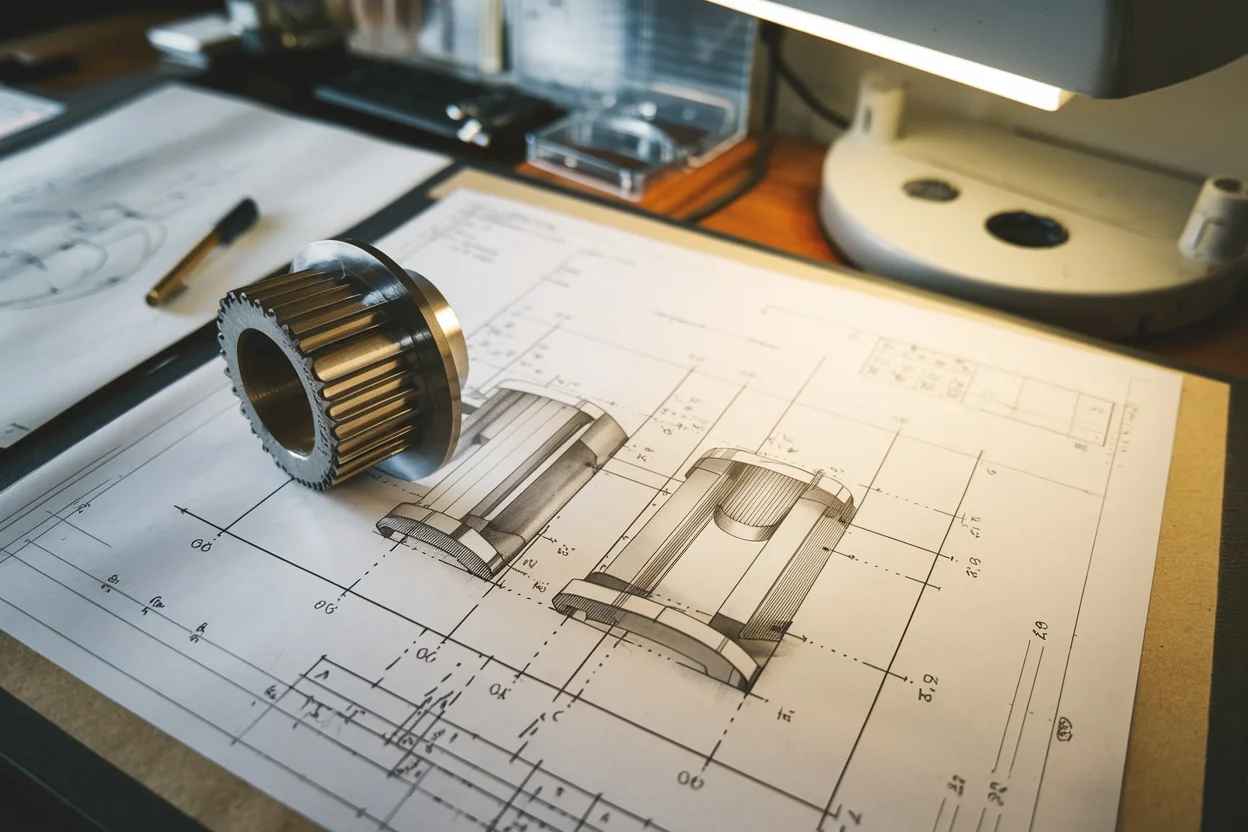With the increasing demand for precision and functional parts in the manufacturing industry, surface treatment of CNC-machined custom parts has become an indispensable link. It can not only improve the performance of parts but also optimize their appearance. However, the cost and cycle of surface treatment vary depending on many factors. How to make a reasonable choice is directly related to the efficiency and cost control of the project.

The importance of surface treatment
CNC machined parts usually have extremely high dimensional accuracy and complex geometric structures, but their surfaces may have burrs, irregular textures or be susceptible to corrosion. Surface treatment optimizes these characteristics to give parts the following advantages:
1. Anti-corrosion performance: extend the life of parts.
2. Enhance aesthetics: enhance the market value of products.
3. Improve functionality: such as increasing hardness, conductivity or surface adhesion.
For example, parts in the aerospace field require corrosion resistance, medical equipment requires non-toxic and harmless surfaces, and the automotive industry focuses on decorativeness and wear resistance.
Analysis of common surface treatment processes
Depending on functional requirements and material properties, the choice of different surface treatment technologies is crucial. The following is an in-depth analysis of common surface treatment methods:
1. Sandblasting
Remove irregular surface textures with high-pressure jetting abrasives to give parts a uniform matte effect.
(1) Application scenarios: Used in plastic moulds, aluminium housings, etc. to improve surface adhesion or decorativeness.
(2) Cost: 10-50 yuan/piece, depending on the type of abrasive and the size of the part.
(3) Cycle: 1-2 days, suitable for rapid processing.
2. Anodizing
Place aluminium alloy parts in an electrolyte to generate a dense oxide film through an electrochemical reaction.
(1) Advantages: Provide corrosion resistance, scratch resistance, and customizable colors.
(2) Application scenarios: Electronic product housings, aviation parts.
(3) Cost: 20-100 yuan/piece, depending on film thickness and color requirements.
(4) Cycle: 2-4 days.
3. Electroplating
Deposit a metal coating on the surface of the part through electric current, such as nickel plating, chrome plating, gold plating, etc.
(1) Function: Enhance conductivity, and corrosion resistance or provide a mirror decorative effect.
(2) Application scenarios: electronic connectors, decorative parts.
(3) Cost: 30-200 yuan/piece, depending on the type of coated metal.
(4) Cycle: 3-5 days.
4. Mirror polishing
Use mechanical or chemical methods to polish the surface to obtain high gloss.
(1) Application scenarios: medical equipment, stainless steel products.
(2) Cost: 50-150 yuan/piece, related to the complexity of the parts.
(3) Cycle: 1-3 days.
5. Spray painting or powder coating
Cover the surface of the part with a layer of coloured coating to enhance the appearance and protective performance.
(1) Advantages: a variety of colour options and delicate surface effects.
(2) Cost: 20-80 yuan/piece, depending on the thickness and colour of the coating.
(3) Cycle: 2-4 days.
Key factors affecting cost and cycle
1. Material type
Different materials have obvious effects on the adaptability and cost of surface treatment processes:
Aluminum alloy: suitable for anodizing, low process cost and short cycle.
Stainless steel: often choose mirror polishing or electroplating, as the processing cost is relatively high.
Plastics: Mostly treated with spray paint or special coatings, with shorter cycle times.
2. Part size and geometric complexity
Large parts require larger equipment to process, and costs rise accordingly.
Complex shapes may require additional fixtures or special processes, which increase time and costs.
3. Batch size
Single-piece production: The unit cost of surface treatment is higher because debugging costs and material waste are difficult to spread out.
Batch production: Suppliers usually offer discounts, and unit costs are significantly reduced.
4. Surface treatment requirements
Special requirements such as film thickness, colour uniformity, and glossiness will increase costs.
High-precision requirements may extend processing time.
How to optimize surface treatment selection
1. Choose the right process according to the application scenario
Corrosion resistance: anodizing or chemical oxidation.
Decorative: electroplating, painting.
Functional: mirror polishing or heat treatment.
2. Communicate details with suppliers in advance
Provide clear part drawings, material information, and processing requirements to avoid rework due to poor communication.
3. Balance cost and performance
Although high-performance coatings are more expensive, they may avoid long-term maintenance costs in some high-demand scenarios.
Surface treatment of CNC customized parts is not a single technical link, but a key step that determines the performance, life and appearance of parts. A reasonable selection of processes can meet design requirements and time constraints while optimizing costs.
If you are considering CNC parts processing and need advice, you can always contact us to provide customized solutions to ensure that your products find the perfect balance between performance and cost.